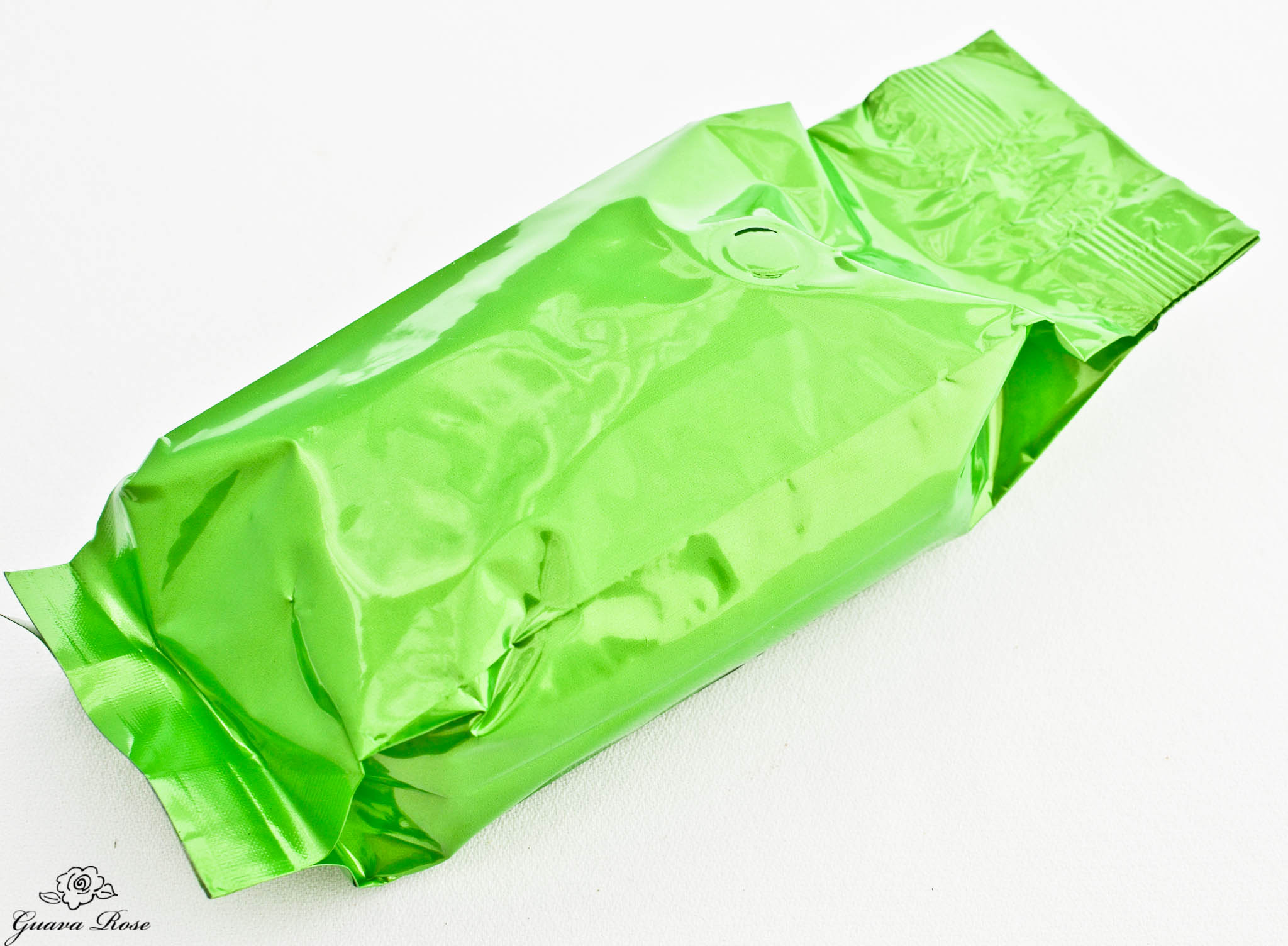Vacuum sealed Pa’i’ai delivered right to my mailbox in a priority USPS envelope
I’ve been having fun playing in the kitchen with Pa’i’ai fresh from Mana Ai in Hawaii.
What is Pa’i’ai? It is simply hand pounded, cooked taro root.
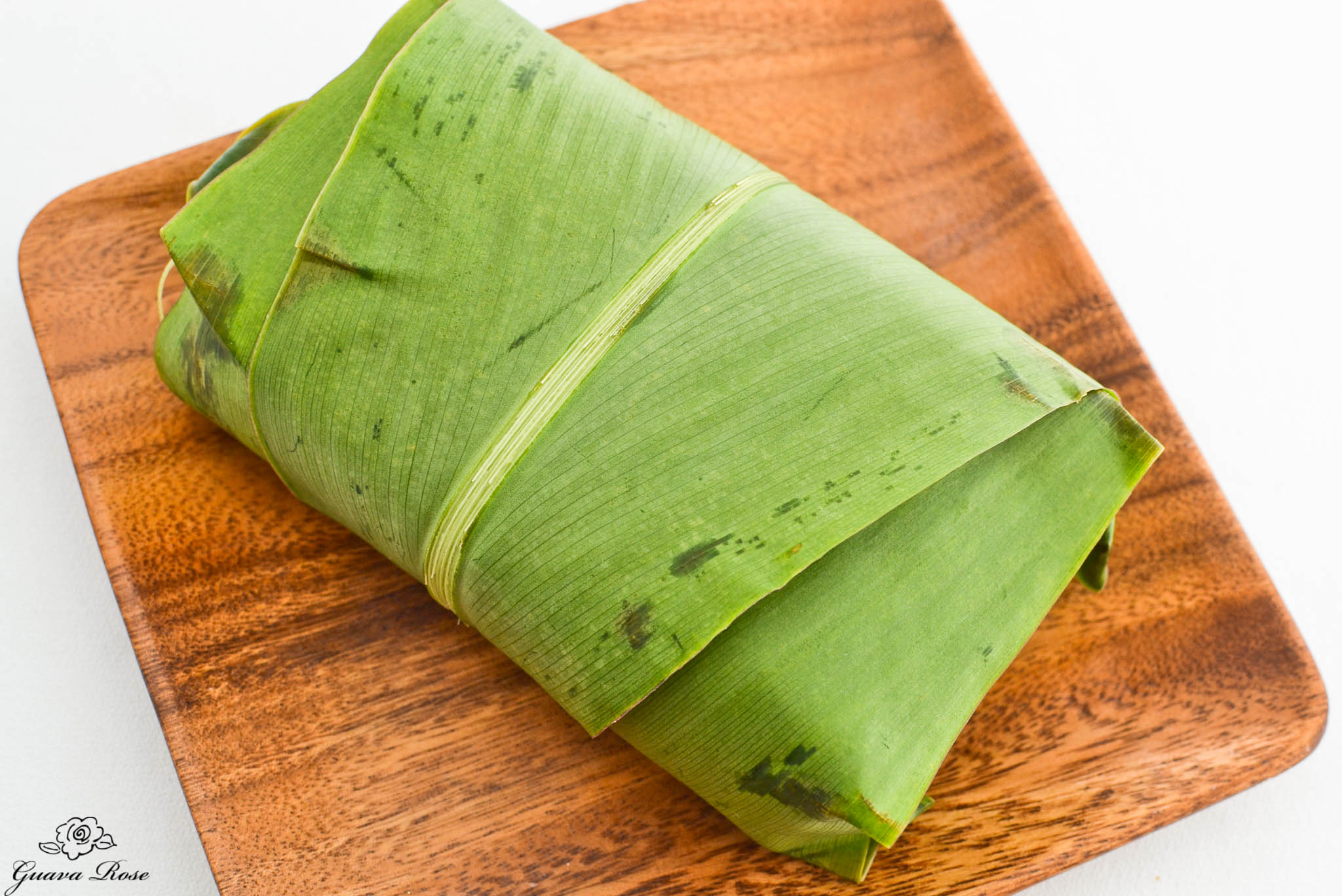
Cut open the vacuum sealed bag and find fresh Pa’i’ai wrapped in fresh ti leaves
Mana Ai uses sustainably grown premium taro direct from farmers on the islands. It is non GMO, and gluten/dairy/soy free, making it very allergy friendly. In addition, taro is easy to digest, high in potassium as well as fiber, and is low on the glycemic index.
Premium taro is hand harvested at its peak, when it contains its highest starch content, in turn producing the best tasting pa’i’ai.
In comparison, the mass taro available to purchase in stores are harvested when they are overripe, to make machine harvesting easier. They do not taste as good.
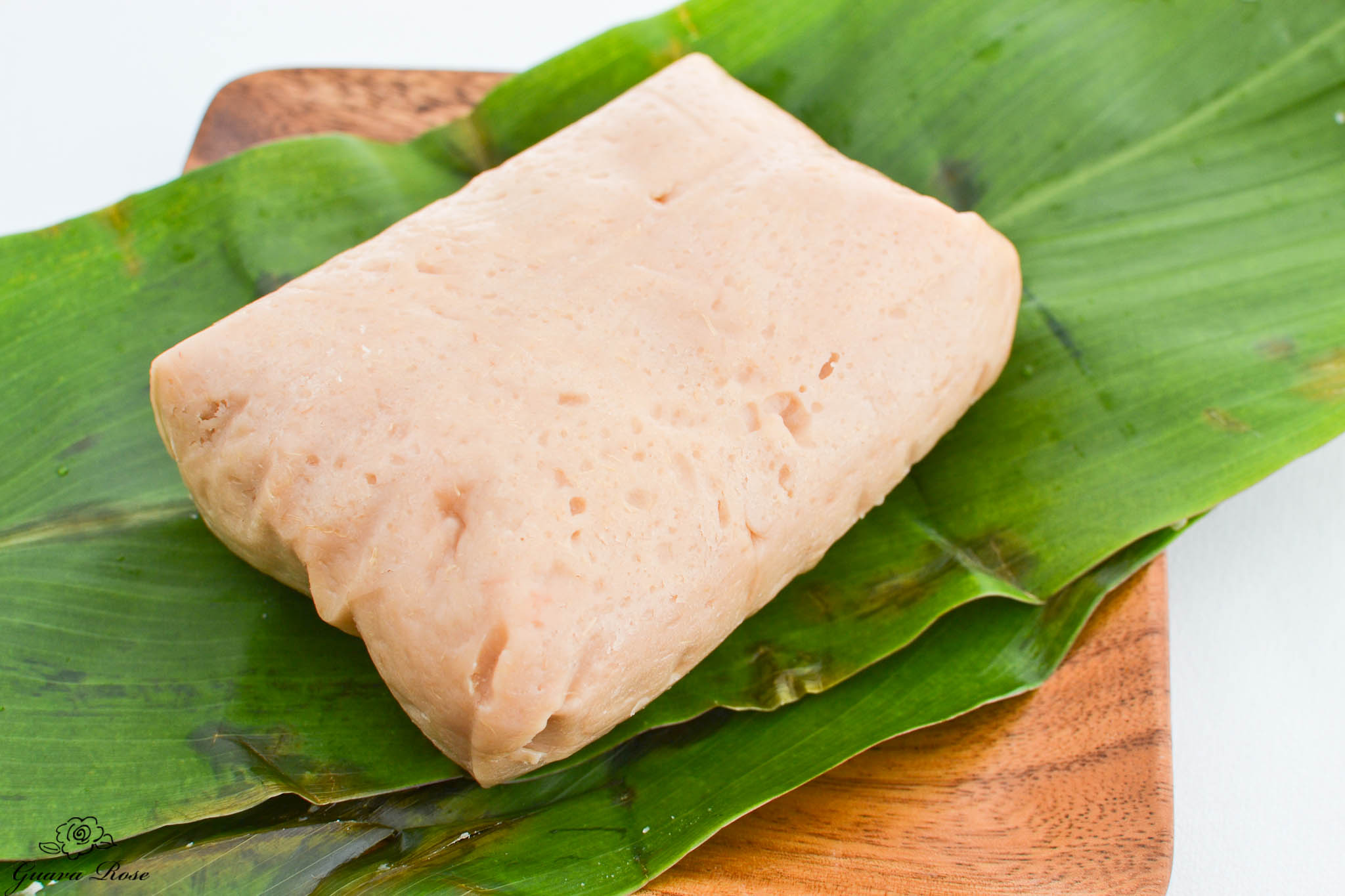
Unwrap the ti leaves and find great treasure! A pound of Pa’i’ai.
Directly from Mana Ai‘s site:
After steaming and cleaning the corm, taro is pounded with the least amount of water on a wooden board, papa kuiai, using a stone pestle, pohaku kuiai. The starch molecules are crushed, forming a gummy mass of broke-da-mouth awesomeness fit for travel and long-term storage. When the Native Hawaiians navigated by canoe throughout the Pacific, they were able to survive off fish from the sea and paiai.
By crushing the starch molecules, the substance begins to ferment in a process not unlike the production of sauerkraut, kimchee, cheese, or daikon. All of these fermented foods rely on the beneficial bacteria lactobascillus. This beneficial bacterium, naturally found in our intestinal tract, has been linked with fighting cancer and staving off the onset of rot and the growth of harmful bacteria.
The difference between paiai and poi is water content. Paiai is undiluted poi, while poi is diluted paiai. Both are, however, super-foods with more than 1000 years of preparation and taste buds behind them.
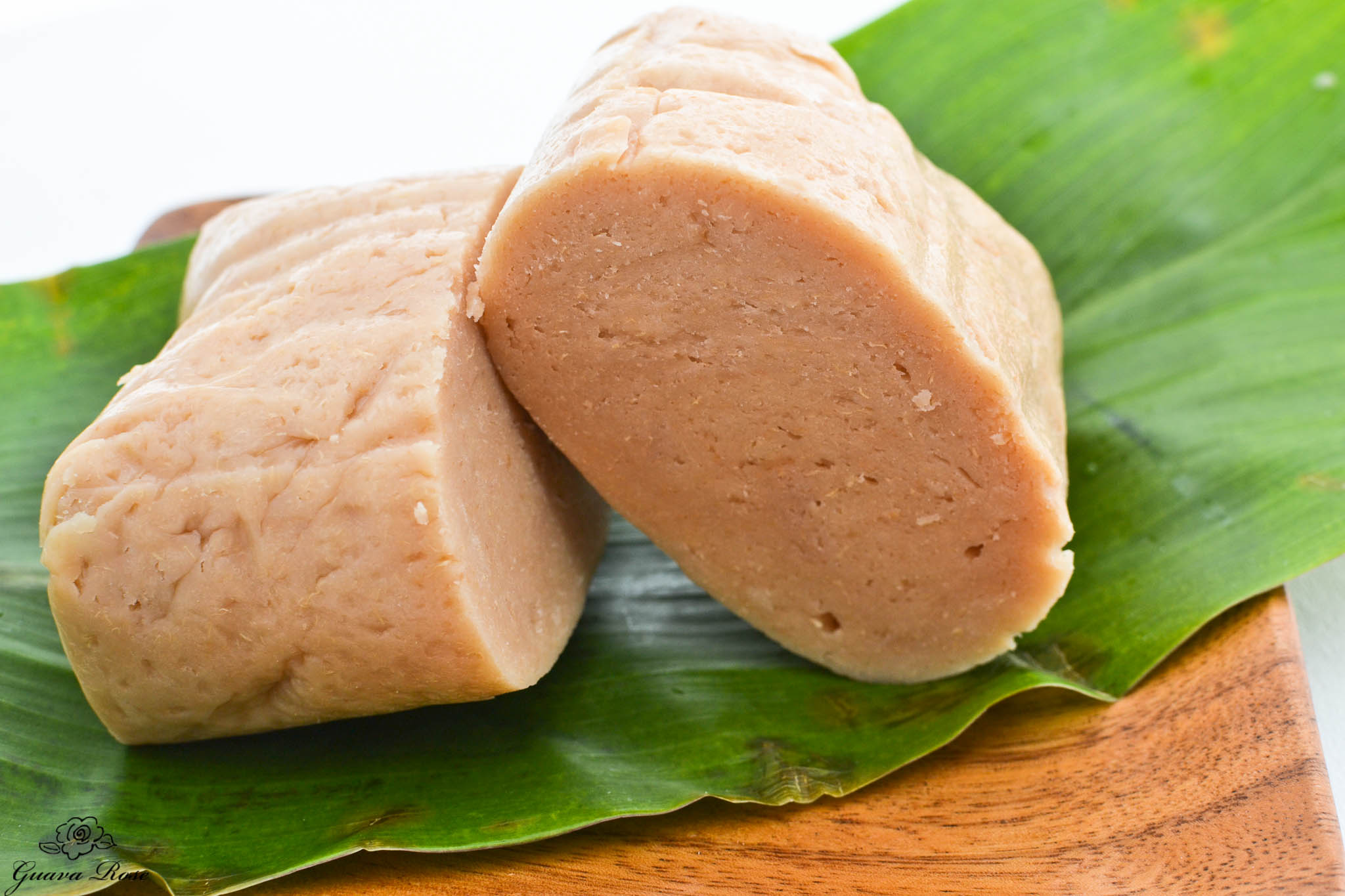
Fresh Ordered Pa’i’ai, firm but still soft in texture
Although pa’i’ai can last for months, (i.e. for a canoe ride across the Pacific), you won’t receive months old stuff when you order it. All orders are cooked and pounded to order weekly.
I figured my order took about 3 days from the time it was mailed to arrive in my mailbox. Then I had to wait another couple of days before I had time to open it up and have some fun.
The pa’i’ai here is about 1 week old, and I could smell the light fragrance of the fermentation beginning.
Mana Ai has some ono looking recipes on their website, and I thought I’d try the pizza.
I decided to make it gluten free, and used Cup4Cup gluten free flour blend.
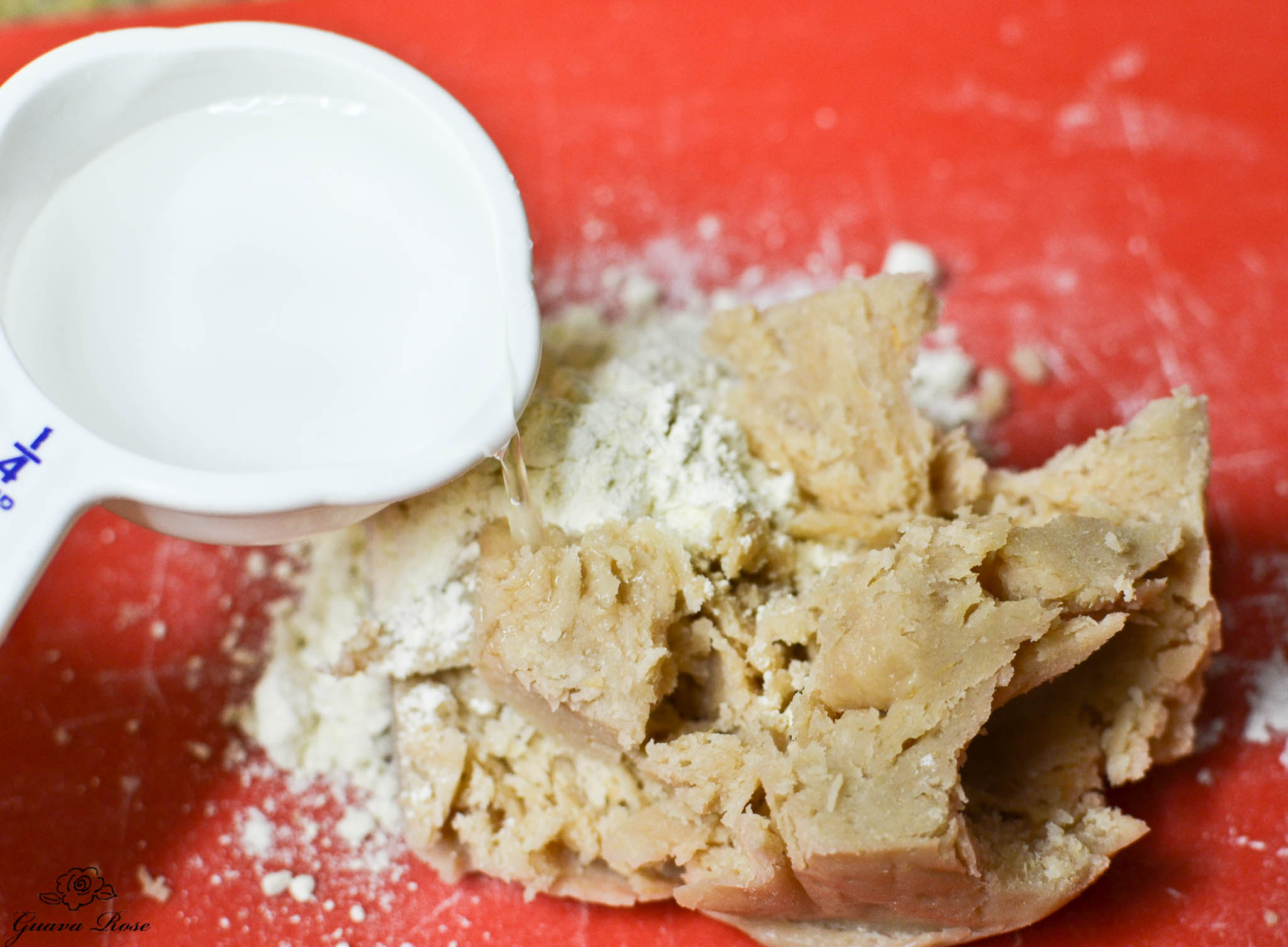
It’s pretty simple, just knead flour into the pa’i’ai until you get a dough that isn’t sticky.
I ended up adding a little water too, since my pa’i’ai had not just been pounded, and the dough seemed to need a little more moisture.
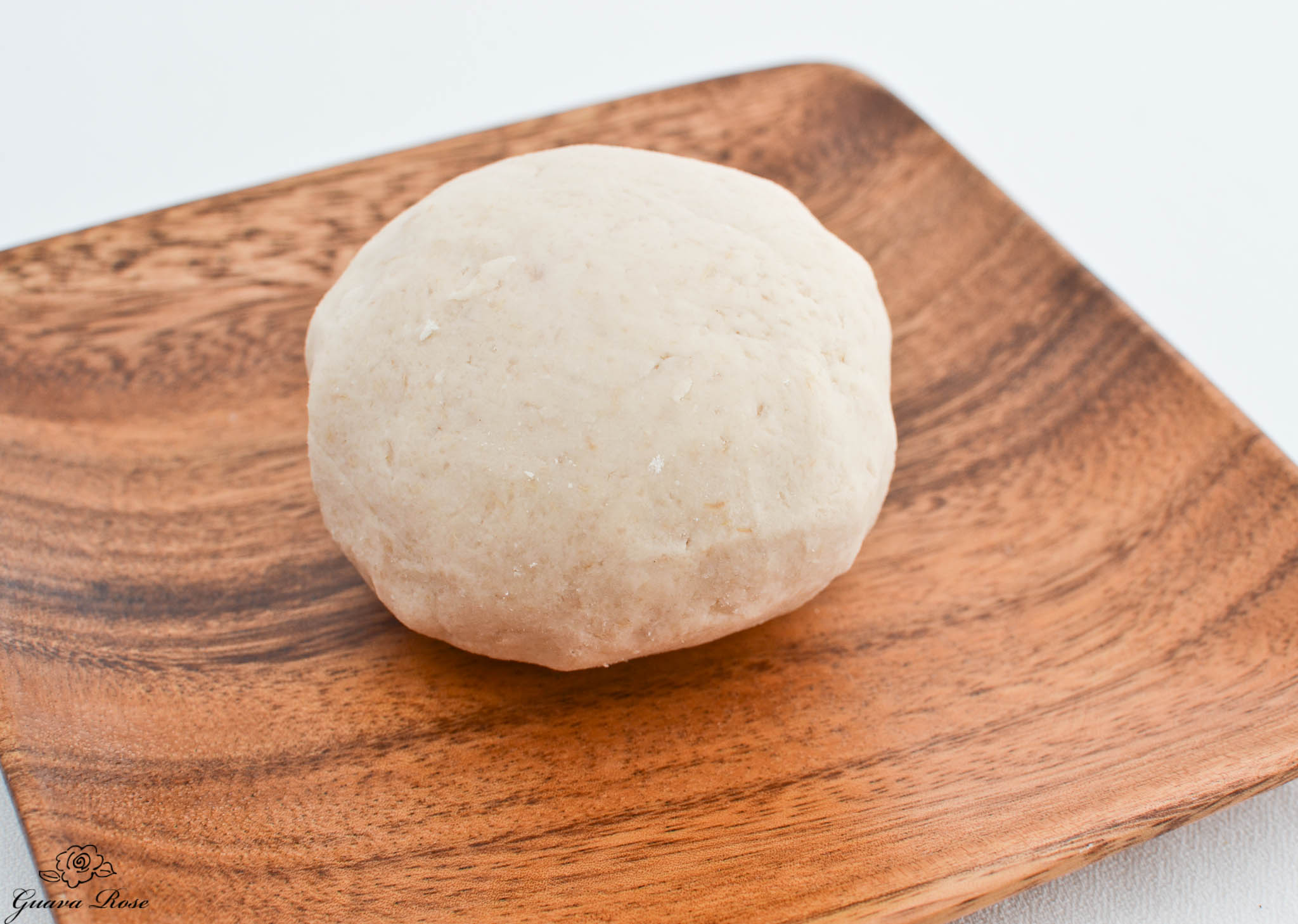
Here’s what my final ball of dough looked like.
I added as little flour as possible to make a workable dough. I didn’t want to add too much extra starch. Flour in general, and especially those gluten free flours can really send the carbohydrate count up skyhigh.
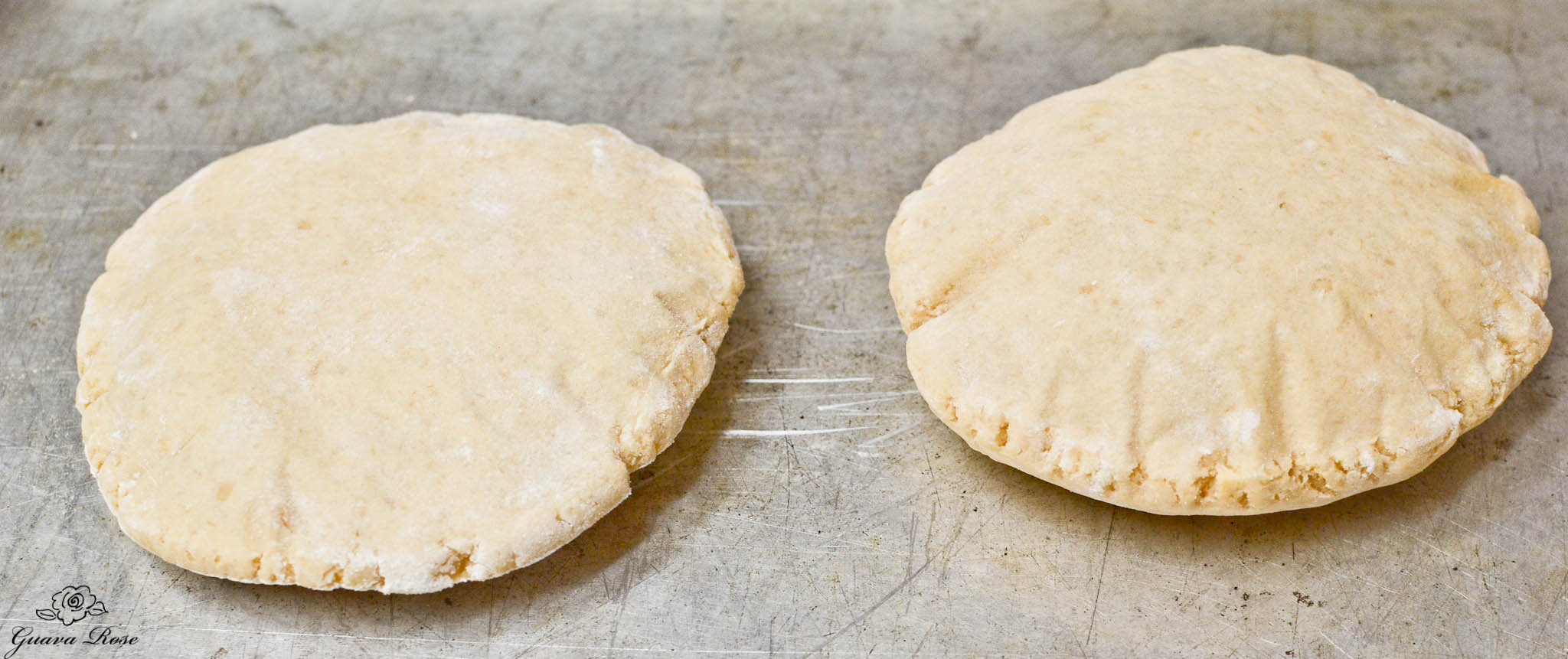
Instead of one big pizza, I changed it up a bit and made personal size pizzas ( 5-6″ rounds).
I rolled them out a little thinner (1/4″ instead of 1/2″-3/4″), and prebaked the dough for 10 minutes at 450 degrees.
Whoa! They puffed up like mochi!
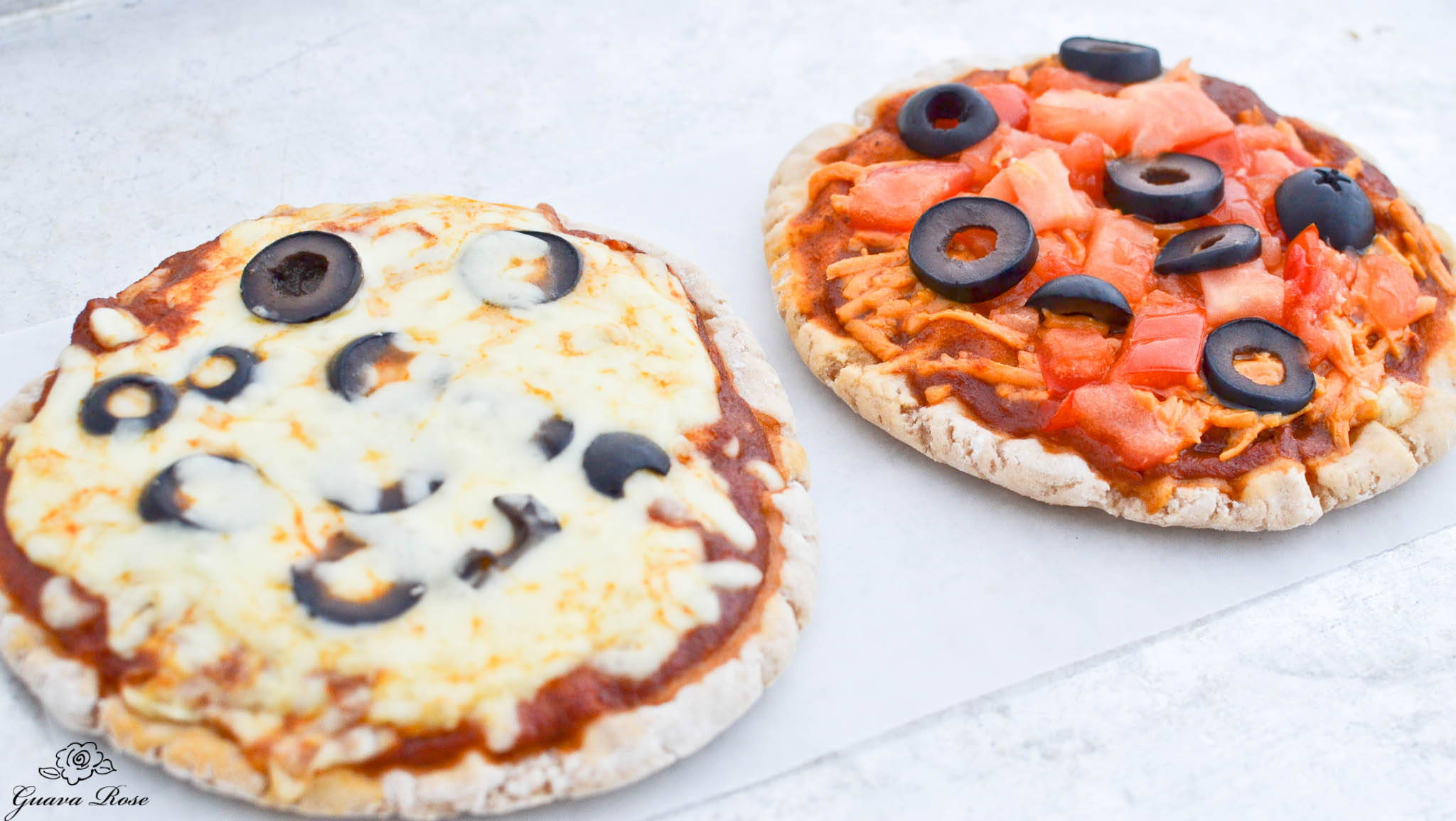
Gluten Free Pa’i’ai Personal Size Pizzas: (left) with Mozzarella Cheese and Olives; (right) with Non-Dairy Daiya Cheese, Tomatoes and Olives
I pricked them with a fork to release the air, covered them with sauce, cheese and toppings, then baked them another 10 minutes.
The crust was crispy on the outside, and chewy on the inside.
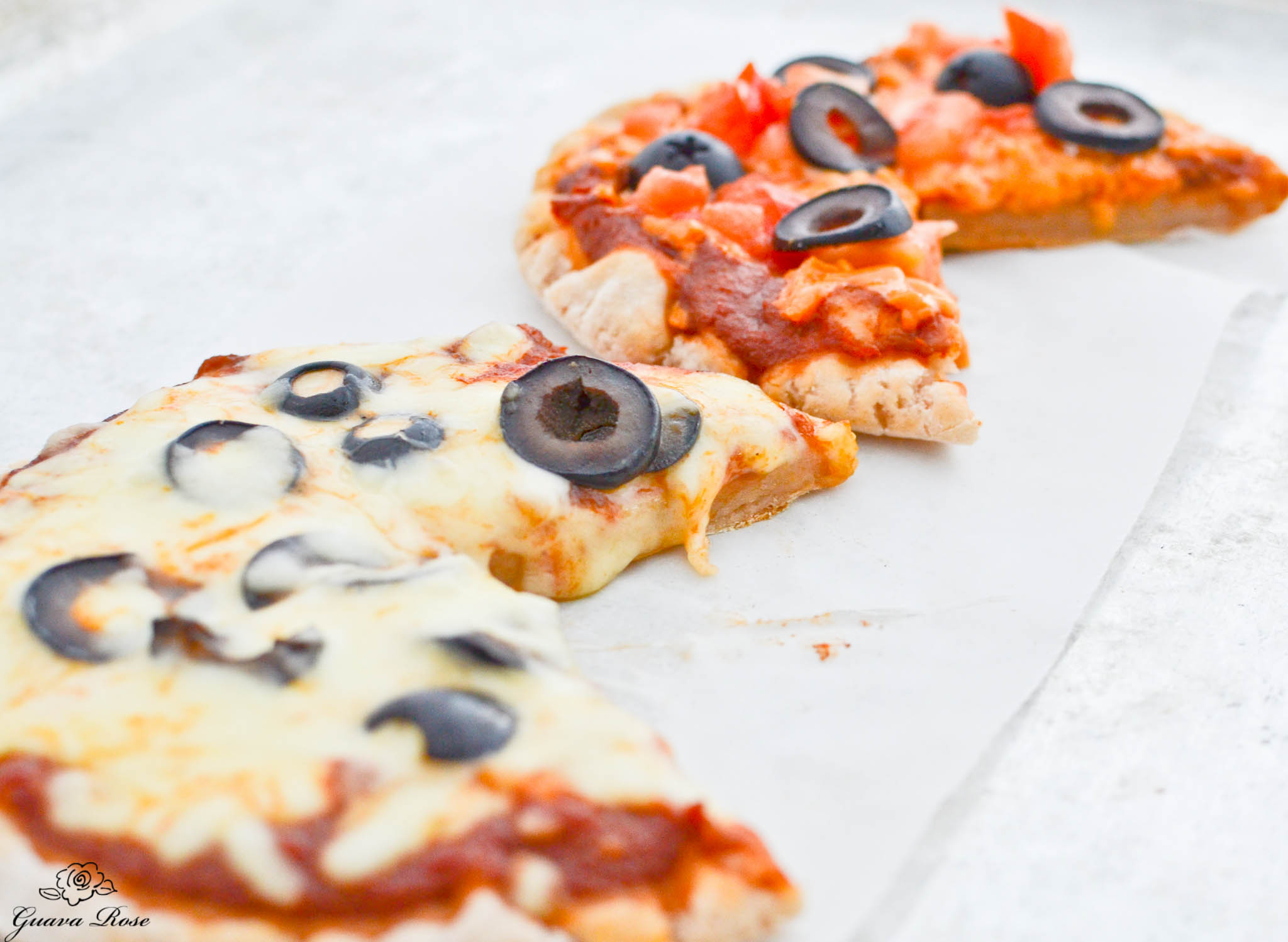
They were delicious! And filling too– I was full after eating only 1/2 a personal pizza.
Note: Cup4cup gluten free flour blend does have milk powder in it, but you could easily substitute another gluten free flour mix that doesn’t have dairy in it if you needed to make a gluten free, dairy free pizza.
More pa’iai recipes to come!
- 8 oz. Pa'i'ai
- 1 c. or more wheat or gluten free flour
- ½ c. or more water
- Marinara sauce
- Regular or non dairy cheese
- pepperoni, olives, mushrooms, tomatoes etc.
- Preheat oven to 450 degrees. Crumble pa'i'ai on a floured surface. Knead in flour and water until a smooth dough forms. Add small amounts of flour and water if necessary while kneading the dough to get a final dough that is not sticky.
- Divide dough into 4 equal balls. Roll each ball out ¼ " thick into circles 5-6" wide. Bake on an ungreased sheet for 10 minutes.
- If the dough has puffed up, prick with a fork to release the air. Top each pizza with marinara sauce, cheese, and desired toppings. Bake for another 10 minutes or until cheese is melted and toppings are heated through.


